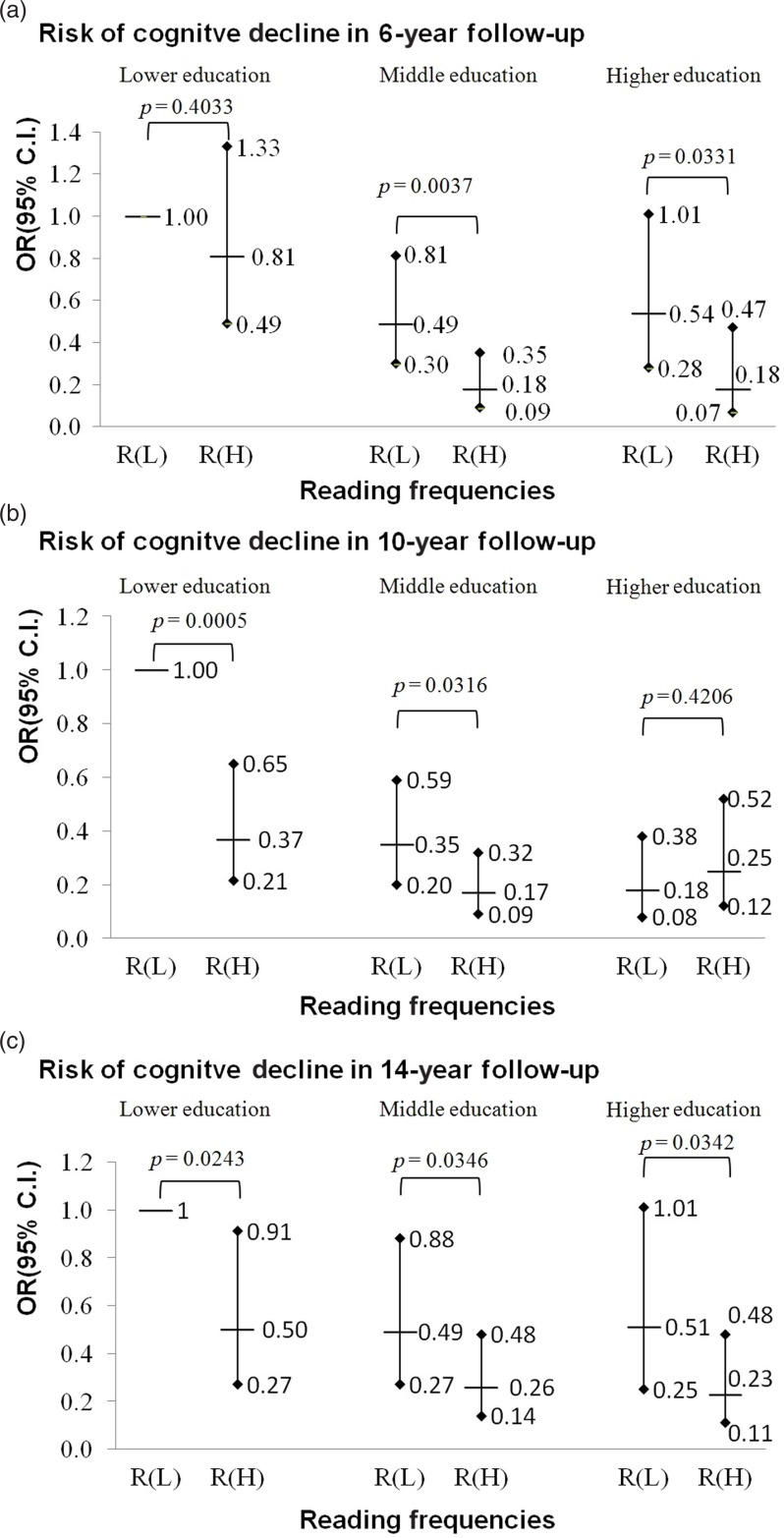Figure 1.
The combination effects of reading and education on the risk of cognitive decline at 6 years, 10 years, and 14 years of follow-ups in the TLSA participants. Results from logistic regression with interaction terms between education and reading based on Model 3 with adjustments for age, sex, ethnicity, marital status, financial status, smoking, alcohol drinking, outdoor activities, number of comorbidities, diabetes, stroke, sight, and the number of SPMSQ errors at baseline using the inverse probability weighting method. Participants with baseline SPMSQ ≤2 were included. Adjusted odds ratios and 95% confidence intervals are presented; R(L) denotes the groups with lower reading frequencies. R(H) denotes the groups with higher reading frequencies; Lower education refers to those who were not formally educated; middle education refers to 1–6 years of formal education; higher education refers to those who have had formal education for 7 years or more. Planned comparisons between low and high reading groups at the same education level are performed and p values of Wald tests for planned comparisons are reported.

